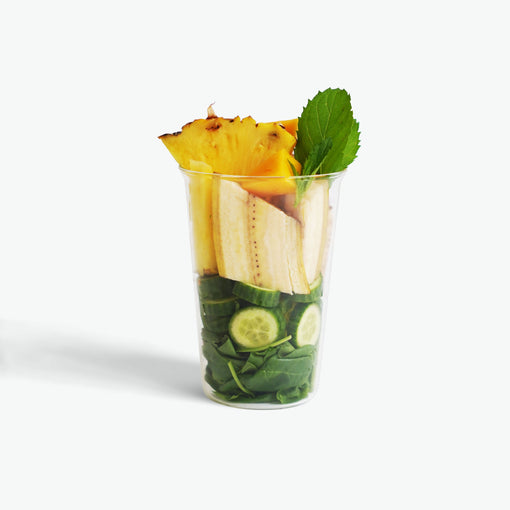Add {{ number }} more products to save {{ price }}
0
Add {{ number }} more products to save {{ price }}
noch 1 Produkt für gratis Versand (spare 5,99€)
Spice – The Benefits of Hot Food
Chilli, spicy peppers, ginger etc. Are these ingredients or magic foods? How healthy is spicy food and what are the benefits of eating it? We took a closer look to examine the effects of spicy food on your body and mind!

Contents of this article:
- Spice around the world
- What is spice?
- Why is spicy food healthy?
- A little spice is necessary
- How often/how much spice is healthy?
- Spicy cooking
- Spicy bowls – Ready-made meal edition
Spice around the world
Hot countries like India are home to many of the extra spicy foods like Bhut Jokolia Chili: key ingredients in popular meals like Tikka Masala or Khakra bread. Other more mild spices like Turmeric or pepper are also very popular. Curry famously originated in Sri Linka and has infused countless foods like lentils, meat and fish with its vibrant flavours. This region is also to thank for giving us things like Thai chilli, marinades, soy sauce, wasabi and kimchi. In other countries in Africa spice is also a prominent cooking utensil. Some meals are flavoured with Piri Piri and Harissa-Paste is hard to avoid especially in northern Africa. Spice in South America comes in lots of shapes and sizes, the most famous being chilli con carne in Mexico. And now to a more local area: in the German kitchen uses a generous variety of spices such as pepper, paprika, horseradish, mustard or ginger. What exactly are the health benefits of these spicy ingredients?
What is spice?
Capsaicin – Healthy spice
Capsaicin is the little component that is responsible for how spicy a certain food is. It is found in foods like pepper or chilli for example. In general, the rule is: the higher the capsaicin content, the spicier the flavour. Aside from finding it naturally in food, capsaicin can also be consumed in a concentrated form like in pills or powders.
Capsaicin is a gold mine of nutritional benefits and often considered a superfood. It can help unveil a variety of powerful bodily functions and has anti-inflammatory, anti-bacterial, antioxidant properties and can also increase metabolic function. Let's take a closer look of the specific health benefits.
Why is spicy food healthy?
1. The cool-down effect
Spicy food triggers a heat or pain stimulus. This activates blood circulation in the mucus membranes and also heats the body tissue. Pores open up, we experience heat flashes and our body temperature is regulated to protect us from overheating. Spicy food is frequently used in the cuisine of hot countries to evoke this cool down effect and protect people from overheating.
Interestingly, this process doesn’t actually cause a temperature change, just the sensation of one. So the same effect can be brought about by eating spicy cold food. Spicy food that is served hot is experienced as being even spicier. Compared to other flavour or tastes, spice isn’t just felt in the mouth but also in other parts of the body.
2. The Pepper-High-Effect
Spicy food improves our lives! Capsaicin not only helps keep our brains fresh, it is also a real brain food and has a positive influence on our concentration as well as our mood. Spice contributes to the release of endorphins which make us feel happy and content, the so-called "pepper-high-effect".

3. Spice up your life
4. Slimming Spice
Chili and co. activate our metabolism and can therefore support weight loss. Capsaicin is considered an important part of a diet oriented towards healthy weight loss. How does this work? Capsaicin stimulates the flow of saliva and promotes the production of gastric juices, so that digestion is in full swing and energy is converted at a faster rate. Fun fact: if spice is consumed daily, it can help burn an extra 50 calories a day.
Spice not only helps us look better, but it also makes us feel better. Spice promotes the optimal absorption of nutrients in our body. Fatty foods are broken down easier and are more easily digestible. Our gut also welcomes spicy food because it promotes the growth of important intestinal bacteria and the reduction of unwelcome germs such as E. coli. Anyone suffering from heartburn is also going to find an antidote in spicy foods.
5. Breathe easy
A well functioning gut and intestinal system is essential for a strong immune system. The health benefits of this can be wide-ranging. Because spicy food stimulates the production of mucus, our breathing is improved which can help protect us from colds. So, next time you have a runny nose, try eating some chilli instead of opting for nasal spray.
Because blood circulation is improved, our mucus membranes receive more blood flow. This can help intensify the flavour of others foods, making it taste even better!
6. Matters of the heart
As already mentioned, capsaicin can add some spice to the bedroom. However, it doesn’t stop there, its also good for our heart! Capsaicin can act as a natural preventative to cardiovascular ailments and also reduces the risk of heart attack or stroke. It also helps reduce and stabilise blood pressure while lowering blood sugar levels. And last but not least: scientific studies have indicated the correlation between spicy food and a longer life expectancy.
A little spice is necessary
To help understand what levels of spice mean what, there are helpful metrics available which can help inform your food choices. The Scoville Heat Unit (SHU) measures how many millilitres of water it takes to dilute capsaicin while maintaining the level of spiciness. This translates into a capsaicin content of 16.1 SHU per 1mg/kg.
For a clearer understanding how spicy something is, here an overview of typical spicy foods:
- Peperoni (100-500)
- Tabasco (2500-5000)
- Jalapeno (2500-8000)
- Cayenne-Pepper (30000-50000)
- Piri Piri (50000-100000)
- Bhut Jolokia (1000000)
- Carolina Reaper (2200000)
- Blair’s 16 Million Reserve (pure Capsaicin, the spiciest chilli sauce) (16000000)
How often/how much spice is healthy?
The principle of ‘the dose determines the poison’ applies to spicy food too. Caution is advised, because too much of anything can be the opposite of healthy and even cause pain. If the food is too spicy or we shouldn’t eat more of it, our body can issue warning signals that can be expressed in a variety of symptoms such as nausea, stomach pains, vomiting, irritations or even diarrhoea. Milder complaints can include stomach pains or an uncomfortable spicy burp or increased blood pressure.
In addition to children, people with stomach issues should refrain from eating too much spicy food. Women who are pregnant or breastfeeding can eat normal amounts of spicy food without concern.
If you’ve eaten too much spice and are looking for the right antidote, a glass of milk or some cheese can be very effective. How much spicy food you can tolerate is a question of habit. Spicy food is related to how we condition ourselves, which means that the food you currently find too spicy, might be fine for you in a few weeks. You can gradually increase your tolerance (and enjoyment) of spicy food.
Too much spice?
If you've consumed too much spice, and want to reduce the effect, we recommend dairy products to help alleviate any uncomfortable symptoms. Foods like a glass of milk or some cheese can neutralise the effect.
In case you're suffering from diarrhoea, psyllium husks can be an antidote here. As an FYI: the spiciness tolerance is a matter of habituation and is subject to the principle of conditioning. This means that the initial pain reaction passes and our perception changes from unpleasant to pleasant. Our tolerance thus increases proportionally to an increasing consumption.
Spicy cooking
You like to spice it up or the health benefits of spicy food have convinced you? Great! Before you get started, there are some details to pay attention to.
First, you should find out which spice you want or should work with. Whole chilis, flakes or powder? The size of the chilli is significant, because the rule generally dictates that the smaller the chilli, the more concentrated the spice. As always, it's advised to examine the ingredients and details on the packaging to find out more about the spice-level.If you’ve selected whole chillies, then you should remove the seeds and chop into small slices. If you’d rather turn down the heat, adding fatty dairy helps reduce the spice (e.g. yoghurt, cream).
Spicy Bowls – Ready-made meal edition
You love spicy food and are in the mood for something firey? Incoming!
From Indian to Thai – our collection of spicy ready-made meals include something for Every.one!
For brief moments of spice craving, our ginger shots offer the best, health-boosting and energising solution!
Discover other exciting articles:
- Cravings – Boredom, Stress or Warning Signals?
- Intuitive Eating – The Science of Listening to Your Own Body
- Vegan Protein Sources – The Key Facts
- Meal Prep – Cook Once, Enjoy Often!
- Gluten-Free Eating – More Than Just a Food Trend
For even more foodie-content follow us on Instagram and join the Facebook Community to get involved in meal creations and to stay up to date on all things Every.

























